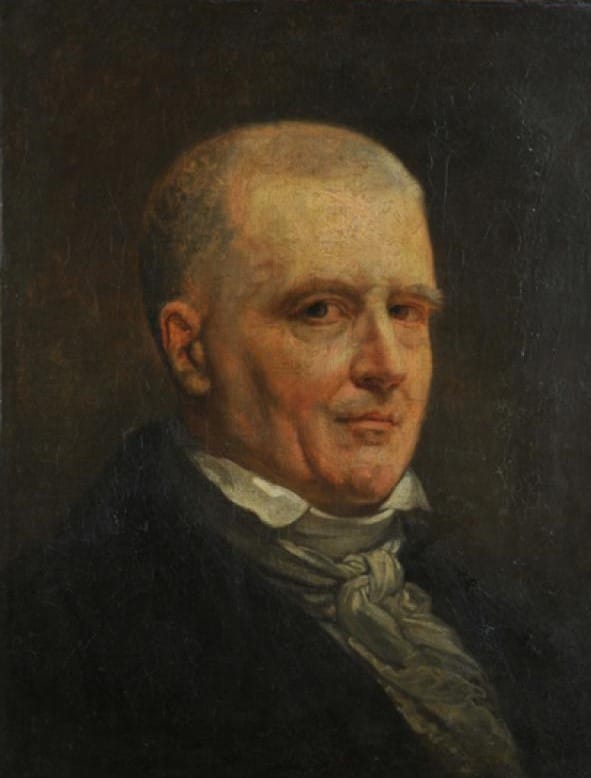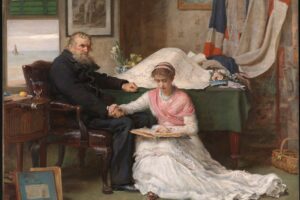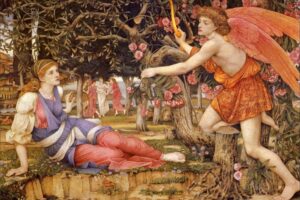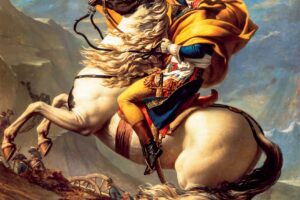Imagine a sunny, carefree afternoon in a peaceful garden, where time slows down, laughter fills the air, and love blossoms gently between two young hearts. This delightful atmosphere is exactly what Jean Honoré Fragonard captures in his painting The Happy Lovers, created between 1760 and 1765. Fragonard, a celebrated French artist known for his playful Rococo style, loved depicting romantic scenes full of joy, warmth, and the sweetness of youth.
A Moment of Tenderness
At the heart of the painting, two young people share an affectionate and relaxed moment surrounded by the beauty of nature:
- The Young Woman: Seated comfortably, she holds a small wooden birdcage high in one hand. Her expression is gentle and joyful, gazing lovingly down at her companion. Dressed in flowing white garments accented with soft touches of red and blue ribbons, she symbolizes grace, charm, and quiet confidence. Her relaxed pose and gentle smile reveal her affectionate nature.
- The Young Man: Reclining comfortably against her, the young man looks up, enchanted by her presence. Wearing brightly colored clothes—a cheerful yellow jacket, vibrant blue shorts, and a striking red cloak—he embodies youthful delight and passion. In his hands, he tenderly holds a small white bird, perhaps freshly released from its cage, symbolizing freedom, trust, and love.
A Setting Filled with Charm
Fragonard sets this romantic scene within a lush garden, filled with rich colors and enchanting details:
- Natural Beauty: The garden frames the couple gracefully, with an arch of green leaves and colorful flowers softly bending around them. The painter uses vibrant greens, blues, and yellows to create an atmosphere of warmth and gentle harmony.
- Symbols of Love: Birds often represent love, freedom, and innocence. Here, the presence of the small white bird and empty cage gently suggests love being freed or shared willingly—highlighting trust and intimacy between the two lovers.
- Details That Delight: Nearby, subtle details—a straw hat casually resting on the grass, a small pottery jug carefully placed on the left side, and flowers scattered all around—enhance the carefree, leisurely feeling of the scene. Each detail helps tell the story of a relaxed, joyful afternoon spent together.
A Toast to Love and Joy!
Jean Honoré Fragonard paints The Happy Lovers with great warmth and tenderness, celebrating young love through gentle gestures and quiet smiles. His brushstrokes are soft, lively, and graceful, perfectly capturing the joy and intimacy between these two people.
This charming painting embodies the spirit of Rococo art, known for its appreciation of life’s gentle pleasures, playful romance, and beauty in everyday moments. Fragonard invites us to pause, feel the warmth of the sunshine, and share in this happy, peaceful scene of love and companionship.
About Artist

Jean-Honoré Fragonard (1732–1806) was a French painter and printmaker who is considered one of the leading figures of the Rococo art movement. His style is a vibrant and fluid expression of the late Rococo, known for its lightheartedness, sensuality, and free-flowing brushwork. Unlike his contemporary Boucher, whose work could sometimes feel more formal, Fragonard’s paintings have a spontaneous and energetic quality that perfectly captured the spirit of the French aristocracy on the eve of the revolution.
Artistic Style and Legacy
Fragonard was a student of François Boucher, and he inherited his master’s love for mythological and pastoral themes. However, Fragonard’s style is more dynamic and painterly, with a liveliness all his own. His work is characterized by:
- Energetic Brushwork: His brushstrokes are visible and expressive, creating a sense of movement and spontaneity.
- Lush, Luminous Color: He used a rich and glowing palette, with shimmering whites, rose, and gold.
- Playful Sensuality: He often depicted scenes of romantic trysts, playful games, and idyllic moments of love, with a light and often erotic touch.
Fragonard’s art fell out of fashion during the Neoclassical period, which favored more serious, moralizing subjects. He died in obscurity, but his reputation was revived in the 19th century, and he is now celebrated as a master of the Rococo.
Artwork Profile
All of the paintings you mentioned are indeed by Jean-Honoré Fragonard. They are excellent examples of his style and a testament to his genius.
- The Swing (c. 1767): This is arguably Fragonard’s most famous painting and a quintessential work of the Rococo period. It depicts a young woman on a swing, with her suitor hiding in the bushes below, catching a glimpse of her as she kicks off her shoe. The lush, overgrown garden, the playful sensuality, and the charming narrative make it an icon of the era.
- The Lover Crowned (c. 1771-1772): Part of a famous series known as “The Progress of Love,” this painting shows a young woman crowning her lover with a wreath of flowers. The scene is filled with a sense of joyous, unrestrained romance.
- The Musical Contest (c. 1754): An early work from his Italian period, it shows a group of young people engaged in a musical game, demonstrating his early interest in playful social scenes.
- The Shepherdess (c. 1760): A charming example of his pastoral scenes, it depicts an idealized country girl in a beautiful, natural setting.
- Blind Man’s Buff (c. 1750-1752): Fragonard painted a few versions of this popular game. The one in the National Gallery of Art is a lively, outdoor scene full of energy and flirtation.
- The Happy Lovers (c. 1765): A beautiful and tender portrayal of a young couple, it perfectly captures the idealized, amorous mood of his mature style.



